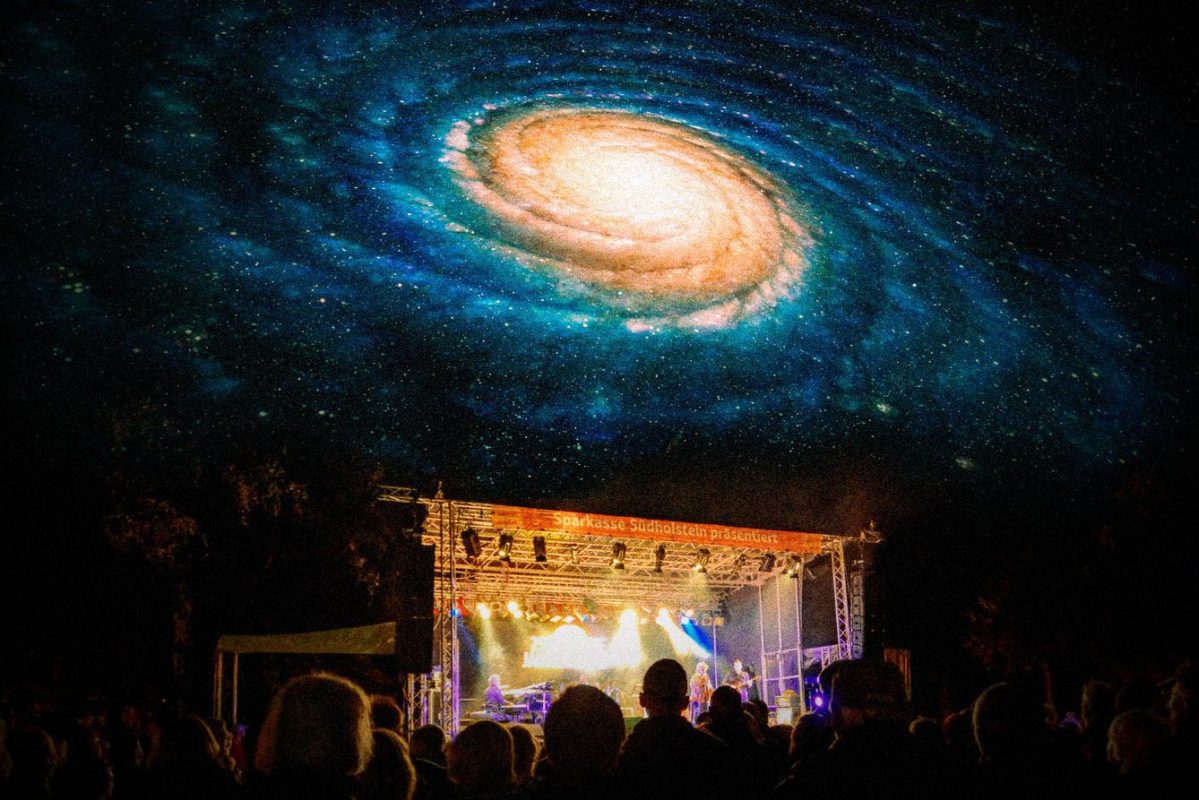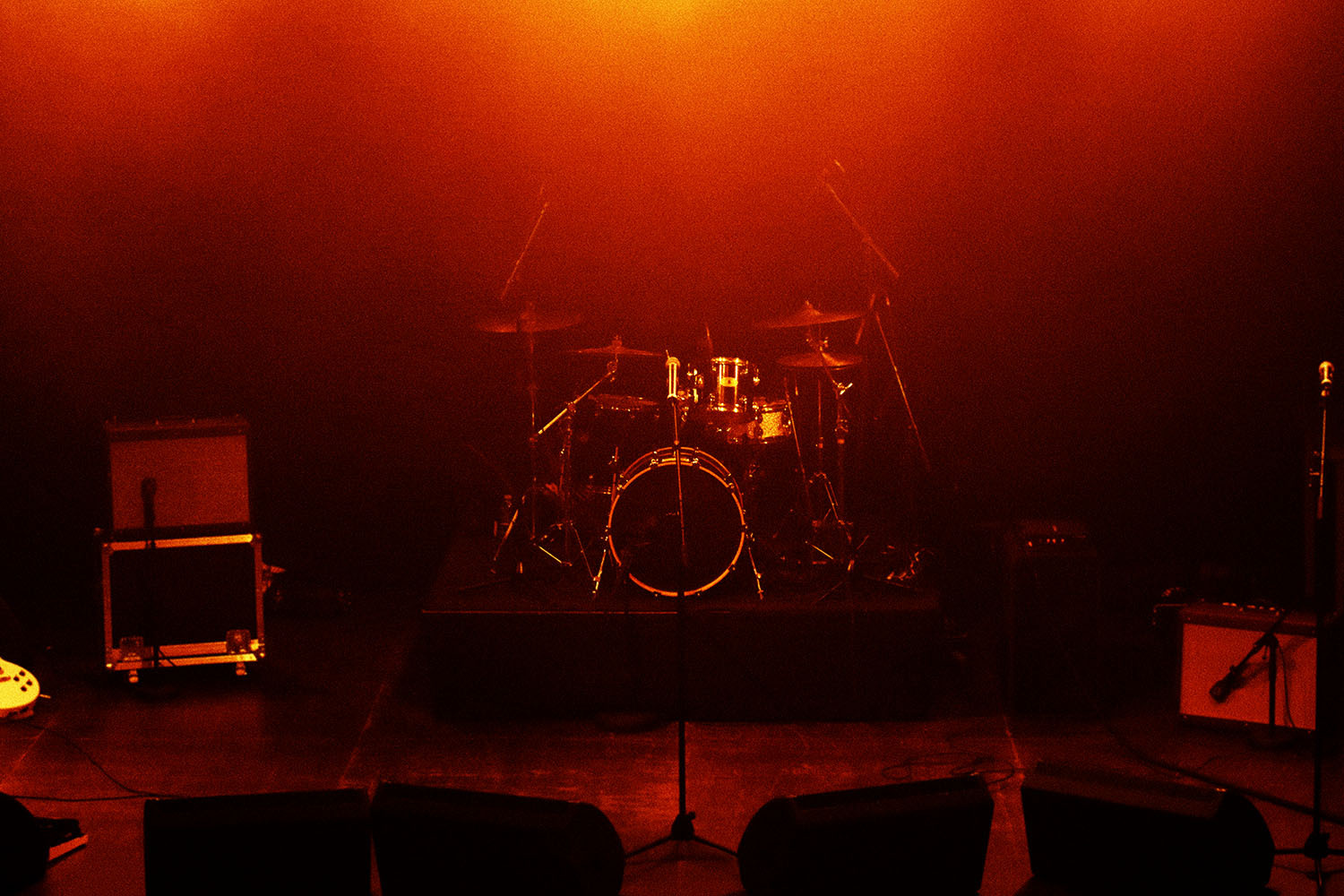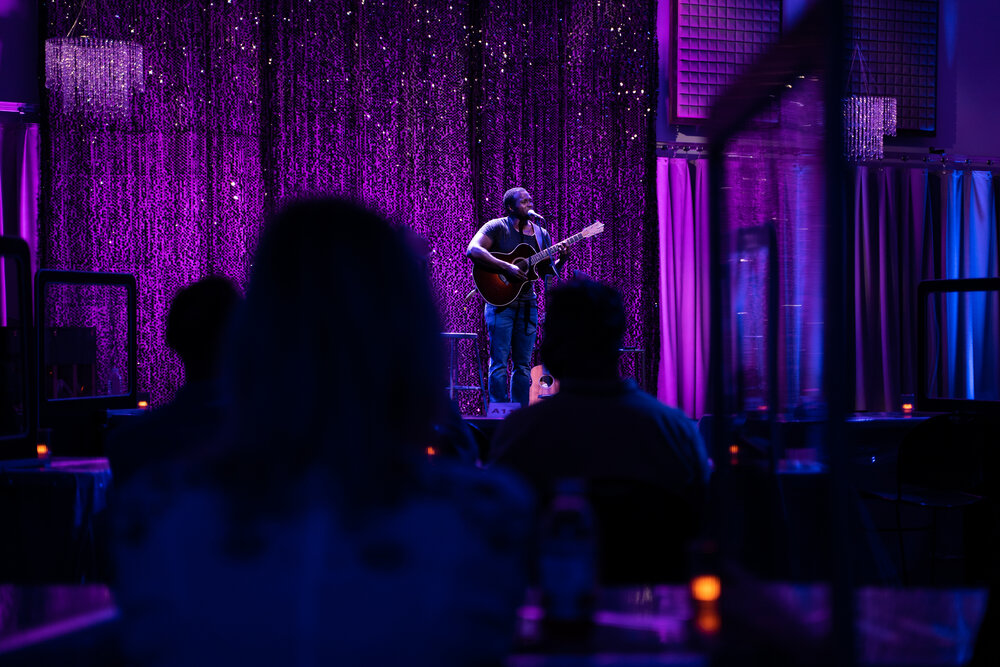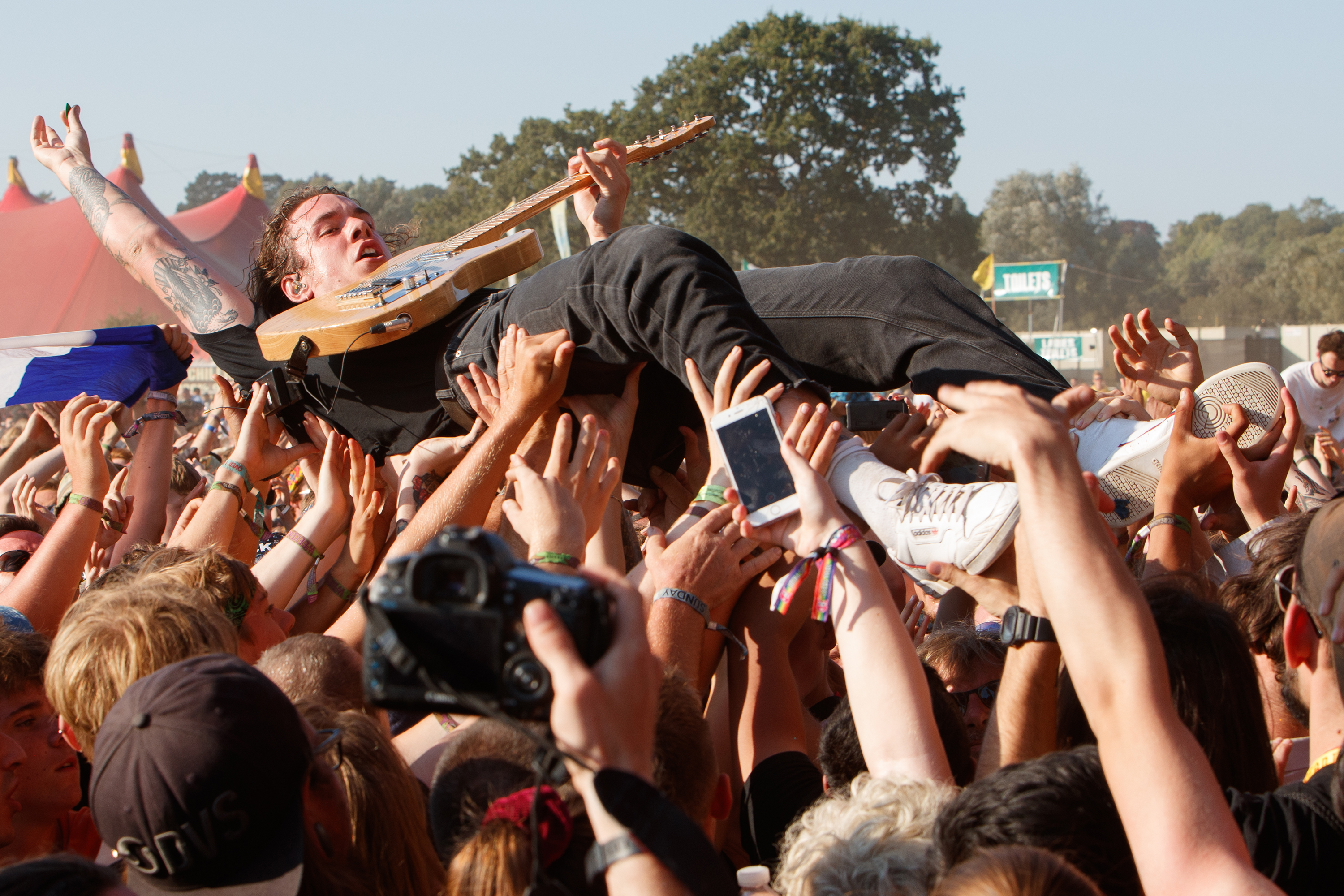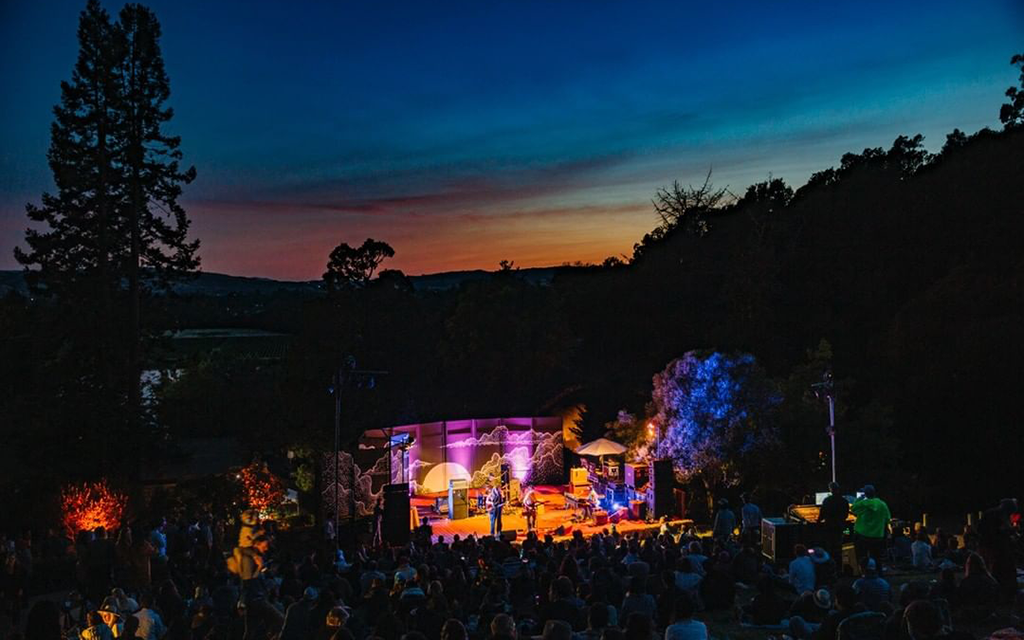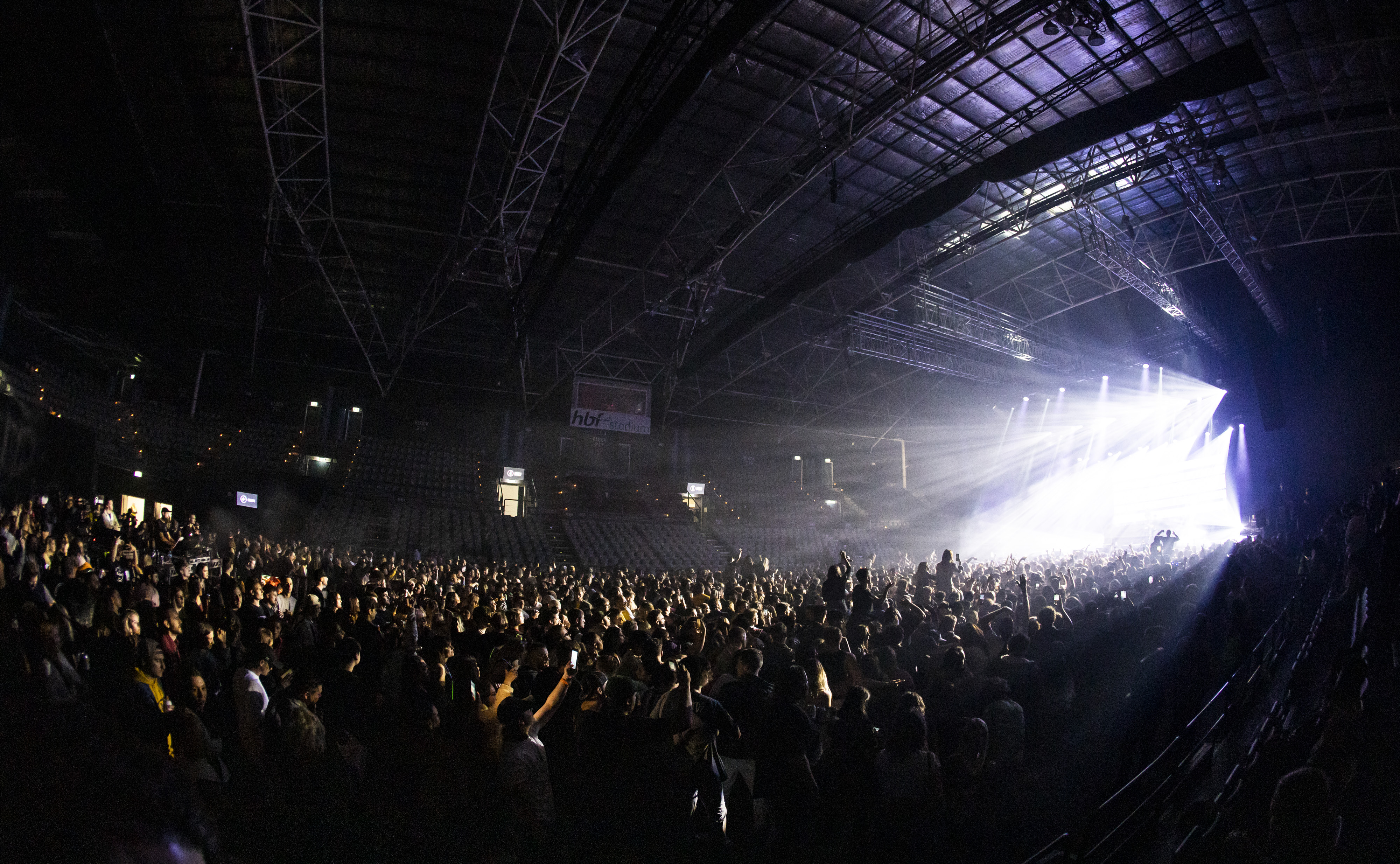Over the next two weeks, we’ll be publishing a series of interviews with thought leaders from a number of industries about the impact of COVID-19 and — more importantly — the improvements they expect to last well into the future. Get to know Post-Pandemic America.
Like everyone in the live music industry, Jay Sweet has spent the past year rolling with the punches, adapting and planning for the day when we can once again gather in massive crowds to watch our favorite bands. But for the executive producer of Newport Folk Fest and Newport Jazz Fest, that also means making peace with the uncertainty of it all.
“I think anybody who says they have any clue what’s going on is a liar,” he tells InsideHook.
He’s got a point: while some major festivals like Coachella and Glastonbury have officially scrapped their 2021 editions and set their sights ahead to 2022, many others have taken a more optimistic approach and simply postponed their spring and summer events to this fall. The assumption is that by then, COVID-19 vaccines will be more widely distributed and we will have achieved some sort of herd immunity that allows festivals to safely return. But is that timeframe optimistic?
Sweet doesn’t have a crystal ball, but he was willing to give us his best guesses as to what may lie ahead for the industry and the ways he thinks music scenes may be permanently changed by COVID-19. One thing he is certain of? Whenever festivals and concerts are able to come back, there will be hordes of live music fans chomping at the bit to attend after a full year without in-person performances.
“The one thing that is sure is that while I believe there’s a pent-up demand for being able to get back together and doing all this stuff in-person, by the same token, I think that the ones that will do the best that are built around certain communities,” he says. “And I can say that, coming from the Newport Jazz Festival, I think jazz is a very strong community. They believe in the historical aspects of the genre, the historical aspect of what it means to be a jazz performer and a jazz listener, and a jazz lover. I think on the flip side, something like Newport Folk is truly about community. And I mean that more that while, yes, the music acts as the hub, the reason for being part of the community, it’s so much beyond the music with this event. It’s being there for each other, and just being a place to commune, a safe place to commune and think about life in general.”
“I still believe that music in the festival era will still have its rites of passages,” he concedes. “The Coachellas and the Bonnaroos — those rites of passages for the young people at their first festival with friends, and going where, seemingly, music is almost secondary. It’s about being there, being seen, being part of a bigger thing. I think there’s always going to be a place for that.”
But even the massive corporate festivals and promoters have had a horrendous year of losses, and their financial health impacts smaller, independent venues and festivals’ chances of survival as well.
“An ecosystem only exists if the big bad wolf of Live Nation and AEG does well, because it’s those two that are getting the artists able to get out on the road,” he explains. “But all the dates that are filled between those mega rooms and mega tours are the small rooms in between, in the secondary and tertiary markets. And I think that if the secondary and tertiary markets, which will be the last ones to come back, if they’re not supported and they die off, that is going to have a massive ripple effect, because it just gives more and more power to the conglomerates, the monoliths, the virtual duopoly that exists currently where the live music industry is really, really run by two to three companies.”
While he’s confident that festivals like his, which have both been around for over 60 years and have very niche, devoted communities who will keep coming back as long as they’re able to, will find a way to survive, Sweet says he’s worried about smaller, independent festivals who have only been around for a handful of years and haven’t had a chance to fully establish themselves. With so many summer festivals rescheduled for September and October (and many travel restrictions still in place), there’s concern that fans will have to become more selective about which they attend.
“Right now most people, if they go to a music festival and they’re from Chicago, they’re probably going to go to Lollapalooza that’s in their backyard,” Sweet says. “They’re probably not going to be like, ‘Let’s hit Bonnaroo.’ Why? Because we’re all in September. Are you really going to go to three of them?”
One way some festivals — like Austin’s SXSW, which recently held its first-ever remote events — and venues have looked to make up some lost revenue is by hosting paid livestreams of virtual performances. But Sweet says he doesn’t see livestreamed performances becoming a permanent fixture after things eventually begin to return to a post-pandemic normal.
“Do I think there’s still a market for that? Yeah,” he says. “But I think it’s going to be a much smaller piece of an artist’s quiver of monetizing their content. I think it will fall back to: live is primary, merchant licensing is secondary, maybe tertiary. Probably equivalent to off-tour merch sales kind of thing. Maybe you do one a quarter. Maybe four times a year, you do a special from your studio, your couch, because you’ve invested in the equipment because of this. Maybe, sure. Someone gets pregnant. Someone has a health thing and can’t go out on the road. Now they know how to not maybe make up that income, but augment it, you know?”
Touring and other live performances still make up the largest chunk of a musician’s income, and after what will amount to nearly two years of little-to-no gigs when all is said and done, Sweet says he’s worried about what the future holds for young people interested in pursuing a career in music.
“I think it’s going to be harder and harder for musicians to be on the road,” he says. “I know that’s crazy to say. [Live performance] is 75% of a musician’s income. And they say merch is another 10%. When was the last time you bought a T-shirt without being at the show? I strongly believe that merchandise, as an income stream for an artist, is directly tied to their live numbers as well … So I think, okay, so if you say 85% of the people’s income is coming from live, and it’s getting harder and harder to do after two years of basically being fallow, how many people — there’s an old joke, like do you want a degree in philosophy or music? And I think your parents, at this point, might be excited that you’re getting a philosophy degree.”
“Look, there’s always going to be people who just have to be musicians, because it’s in their DNA,” he continues. “I’m just worried about when someone has to learn to put 10,000 hours into playing their instrument, like truly 10,000 hours to be a Chris Thile, or a Sarah Watkins, or a Molly Tuttle, or a Billy Strings, or whomever that may be. The reason I bring that up is if you’re going to decide to be a musician in this day and age, during what we’ve seen in the last 12-18 months, there is going to be a whole swath, a big chunk of people that are just like, ‘Yeah.What happens if another pandemic hits? I was thinking about becoming a musician. Now I’m just going to become a coder.’”
As more and more legendary performers continue to age and scale back the number of live performances they’re willing to do, Sweet worries that there won’t be anyone — particularly in genres like jazz, folk or bluegrass, where mastery of an instrument is vital — from younger generations to step forward and take their place.
“I feel, as somebody who spends their entire career trying to bring people together in large quantities, and using music as the stick and carrot to do that, it is extremely unnerving to watch a new generation not being freshly minted to fill the legends, like Kris Kristofferson retiring, and God forbid, we should be protecting Mavis Staples like she’s the fucking Declaration of Independence,” he says. “There should be people with Lysol just walking around her. You lose John Prine. The people like Dolly [Parton] and people like Mavis, we’re not replacing them. And here’s the thing, if we’ve lost the full year and probably 18 months of building whoever that next person may be … that void won’t be felt immediately, because you know what? People are going to want to see Dolly, and Mavis, and the others. But that next generation, I bet you is going to be far more segmented, built for smaller, more intimate [performances]. Like a big show might be 500 people now. A big show was House of Blues at 2,800 or so. The people who had graduated beyond the House of Blues will be playing in the House of Blues when they come back, and probably to a much reduced capacity.”
Some states like New York will allow venues to operate at a very limited capacity beginning in April, but for most, opening their doors and operating for such a small number of customers is untenable, and most will likely elect to remain closed until they can reopen at full capacity. Sweet says we may see some minor logistical changes in the near future, like temperature checks being a requirement for admission. (“Hey, I don’t care if it’s a pandemic or not,” he says. “You’re running a temperature of 104, you’re not coming in here.”) But he’s adamant that, thanks to pandemic-inspired budget cuts to many music education programs across the nation and the general difficulty of learning an instrument over Zoom, the biggest impact from COVID-19 won’t be felt in the live music for several years.
“We’re not going to see how deep those scars are until two or three years down the road,” he says. “Think of all those bar bands we saw in college. Those don’t exist right now. There’s no bars and there’s no college where the kids are jamming together and being able to play in some sweaty dorm or some sweaty bar. Every major artist that is a massive artist played in the coffee shops, bars and small venues. They’re all closed … so that organic growth has been completely interrupted. And so where does it start when it comes back? I can’t fathom the amount of bands that were on the precipice of ‘that tipping point’ of being able to do this for a living, that have just tumbled back and just given up.”
This article was featured in the InsideHook newsletter. Sign up now.
